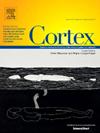The anticipatory effect of goal-directed action planning with a lower limb on peri-personal space
IF 3.3
2区 心理学
Q1 BEHAVIORAL SCIENCES
引用次数: 0
Abstract
Recent studies have demonstrated that the representation of peri-personal space (PPS) can be strongly modulated by the intention to execute a spatially-directed hand-movement. However, the question of whether analogous motor-induced PPS modulations can be observed during the planning and execution of goal-directed lower limbs movements has been scarcely investigated. Here we asked whether changes in the visuo-tactile PPS maps occur during the planning of a goal directed foot-movement. We asked participants to respond to the location of a tactile stimulus delivered to the index finger (top) or the thumb (bottom) of the right hand while ignoring a visual distractor presented at congruent or incongruent elevations, either close to the foot or close to the goal of the foot movement. This version of the cross-modal congruency task was performed under two different experimental conditions, as a baseline (static task, no movement involved) and embedded into a dual-task in which participants also had to plan and execute a goal-directed foot movement (dynamic task). In the static task, comparable cross-modal congruency effects (CCE) were present near the foot and near the movement goal. In the dynamic task, the CCE near the foot shrank considerably, whereas a sizable CCE was present near the movement goal. This anticipatory reweighting of the multisensory representation of near-space demonstrates that PPS is modulated by the intention to perform a goal-directed foot movement, with a weakened representation of the space around the currently occupied foot location when a movement is imminent.
下肢目标导向行动计划对周围个人空间的预期效应
最近的研究表明,周围个人空间(PPS)的表征可以被执行空间定向手部运动的意图强烈调节。然而,在目标导向的下肢运动的规划和执行过程中,是否可以观察到类似的运动诱导的PPS调制的问题很少被研究。在这里,我们询问视觉-触觉PPS地图的变化是否发生在目标导向的脚运动规划过程中。我们要求参与者对传递给右手食指(上)或拇指(下)的触觉刺激的位置做出反应,同时忽略在接近足部或接近足部运动目标的一致或不一致高度呈现的视觉分心物。这个版本的跨模态一致性任务在两种不同的实验条件下进行,作为基线(静态任务,不涉及运动),并嵌入到双任务中,参与者还必须计划和执行目标导向的足部运动(动态任务)。在静态任务中,在足部和运动目标附近存在可比较的跨模态一致性效应。在动态任务中,足部附近的CCE明显缩小,而在运动目标附近存在相当大的CCE。这种对近空间多感官表征的预期重加权表明,PPS是由进行目标导向的足部运动的意图调节的,当运动迫在眉睫时,当前占据的足部位置周围的空间表征减弱。
本文章由计算机程序翻译,如有差异,请以英文原文为准。
求助全文
约1分钟内获得全文
求助全文
来源期刊

Cortex
医学-行为科学
CiteScore
7.00
自引率
5.60%
发文量
250
审稿时长
74 days
期刊介绍:
CORTEX is an international journal devoted to the study of cognition and of the relationship between the nervous system and mental processes, particularly as these are reflected in the behaviour of patients with acquired brain lesions, normal volunteers, children with typical and atypical development, and in the activation of brain regions and systems as recorded by functional neuroimaging techniques. It was founded in 1964 by Ennio De Renzi.
 求助内容:
求助内容: 应助结果提醒方式:
应助结果提醒方式:


